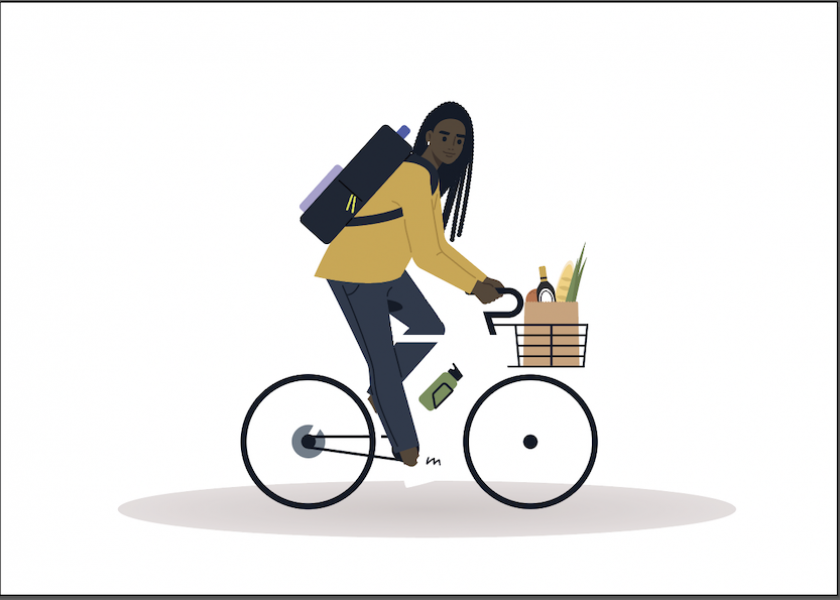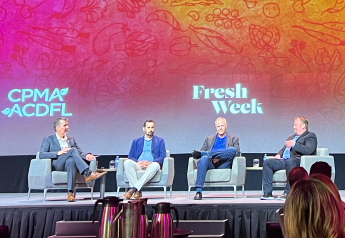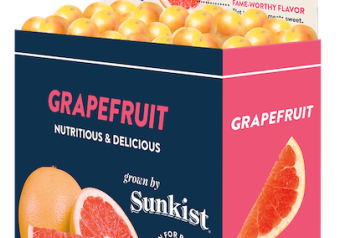How to capture those Gen Z consumers

At 65 million people in the U.S. and multiplying, there’s a rising demographic with $44 billion in spending power: They’re the Generation Z consumer, and everybody is talking about them.
We better pay attention, if we want our companies to survive and thrive — and the general public to eat more fresh produce.
Who are they?
Born roughly between 1997 and 2012, the oldest Gen Zers are 25 years old in 2022. They might be fresh out of college, getting started in their careers, setting up house and accomplishing other "adulting" milestones, as millennials say, such as preparing balanced meals at home, even meal-planning.
Before their first dinner party, they could be researching (via app) the difference between dino and curly kale microgreens, grown in an urban warehouse and delivered to their door sustainably.
They are idealists and values-driven, favoring mission-based companies and voting with their dollar. They like local and organic.
"What’s great about [buying] local, though, especially for the Generation Z consumer, is they are really about value-based companies. When they’re able to buy from a local farm, they feel really good about that,” says Rachel Shemirani, senior vice president at Barons Market, San Diego.
“So, it’s super important to stay local and tell a little blip of the story. Even saying, ‘Oh, this farmer is in this global town.’ Then, that consumer is now your advocate. They will hashtag it. They will put it on Instagram. It always amazes me how excited people get about grocery stores on Instagram. And that's exactly what you want.”
Gen Z gets excited by local brands and local produce, Shemirani said. Some of them even enjoy grocery shopping.
“They will make recipes out of your products, tagging it on Instagram. It really is full circle,” she said.
Even so, Gen Z members hold their money tight because they watched their Gen X and older millennial parents struggle in recessionary times. Companies have a challenge with these thrifty consumers shaped by uncertain economic times and those who learned early to find deals online, according to Bloomberg. They’re predicted to have more disposable income than their parents — a first for the last few decades.
They’re also the most racially diverse generation in the U.S., with only 52% of them identifying as non-Hispanic white, according to Pew Research Center. And they have an attention span of 8 seconds (thanks, TikTok), so you better catch them fast with your promotion.
That doesn’t mean they’re not smart. A total of 59% of GenZers continue their education in college. For comparison, 53% of millennials enrolled in one.
And 98% of Gen Z members have a smartphone, used for five-plus hours daily by 55% of them, so you know where to reach them.
It’s not their fault. They’re digital natives: the first generation to not know the world without the internet and smartphones. No generation is more tech-savvy than they are … yet.
Winning Z’s dollars
With these qualities in mind, let’s look at some consumer trend predictions.
Affordability, health, sustainability and social impact will be the focus of fundamental shifts in consumer behavior, according to the International Fresh Produce Association and the Ernst & Young Future Consumer Index. That tracks with what we know Gen Zers are like.
Generational differences in buying must be taken into account, says Rebeckah Freeman Adcock, vice president of U.S. government relations for the association.
“The things they care about are going to influence all these things. It’s going to have an effect on how everyone does their business,” she says.
Gen Z and millennials are the target audience for Produce for Better Health Foundation, says Sharese Roper, senior director of industry and partner engagement.
“That’s a shift. We used to target Gen X moms,” she says of the nonprofit organization’s mission to increase fruit and vegetable consumption. “Gen Z is more interested in being healthy and fit and in climate change. They’re teaching their kids their health habits.”
In 2019, the foundation’s consumer-facing brand changed from “Fruits & Veggies: More Matters” to “Have a Plant,” to grab ahold of the plant-forward movement.
“Fruits and vegetables are the original plants, and we want to take that word and own it,” Roper said.
And they’re owning it, Gen Z and millennial style, by partnering with social media influencers.
“Not only do they have the trust of followers, they have credentials — innovative prep ways that opens doors to execution,” Roper says of the social media personalities who have thousands, sometimes more than a million, followers on their accounts.
The foundation was expected to release some new behavior research, called “Hacks to Habits,” which is related to the “Know-Feel-Do” process of habit change previously explored.
“The TikTok craze is all about hacking everything,” Roper said. “Previous generations needed help with prep, recipes, storage. Now, with social hacks, younger generations don’t have those hurdles. Hacks are a gateway to creating those healthy habits.”
In June, Mackenzie McLeod of DMA Solutions posted her own list of what fresh produce marketers need to know about Gen Z. She’s the executive director of brand management at the Dallas-based marketing agency for fresh produce companies.
Her list resembles what other research has shown, including the importance of prioritizing these factors:
- Snacking: At school, students get about 25 minutes for lunch and rely on snacks to hold them over between meals. And 54% of teens preferred healthy snacks, according to a semiannual report from Piper Sandler assessing teen spending and brand preferences.
- Corporate responsibility: “This generation cares deeply about supporting causes, brands and companies they believe have a positive social impact. In their eyes, businesses and corporations have an obligation to use their influence to positively impact the world — it has to be about more than just profits,” McLeod says.
- Price sensitivity: Having watched their parents struggle in the 2008 recession, they are careful with where their dollar goes. Communicate value — sustainable packaging or a social responsibility story — if it’s a premium product at a higher price. If that doesn’t work, appeal to their love of deals. They’d love to save 15% by signing up for an email list or digital coupons.
- Plant-focused, local, authentic: About 65% of Gen Zers find a plant-forward diet appealing, according to Aramark, a foodservice company for more than 500 college and university campuses. Also, 65% is the portion of Gen Z members who try to learn the origins of anything they buy, including where it’s grown and how.
Consider these five tips for marketing to Gen Z:
- Share your values: It’s about more than the carrot itself.
- Checkout and shopping on Instagram: Be where your consumers are. ‘Nough said?
- Capitalize on experiences: 78% of Gen Zers choose to spend money on experiences versus buying something tangible. They have online ad fatigue, and some even crave brick-and-mortar stores.
- Up your promotional strategy: Offer savings for this financially savvy group.
- Work with influencers: 65% of Gen Zers have purchased something based on an influencer’s recommendation.
Source: BigCommerce, a software-as-a-service e-commerce platform







